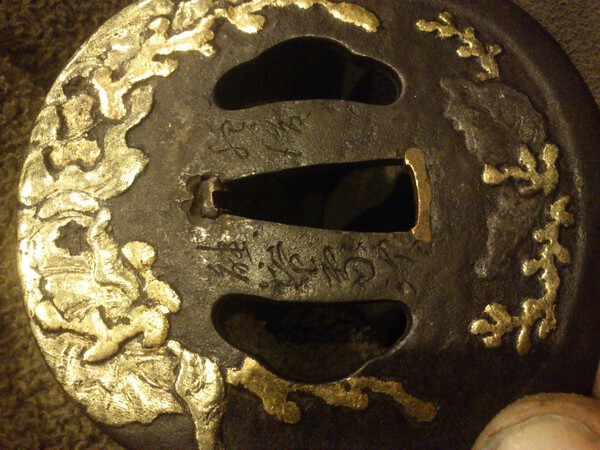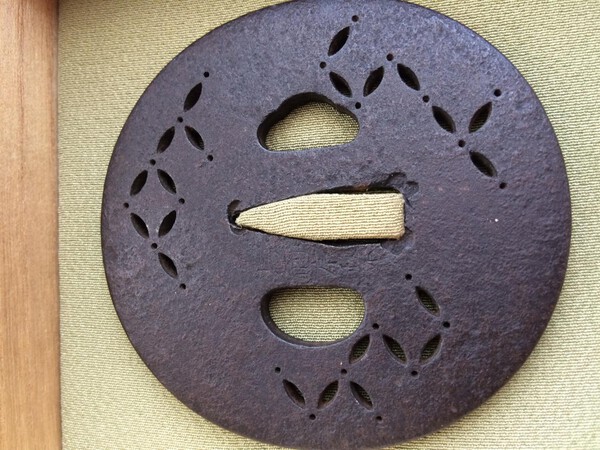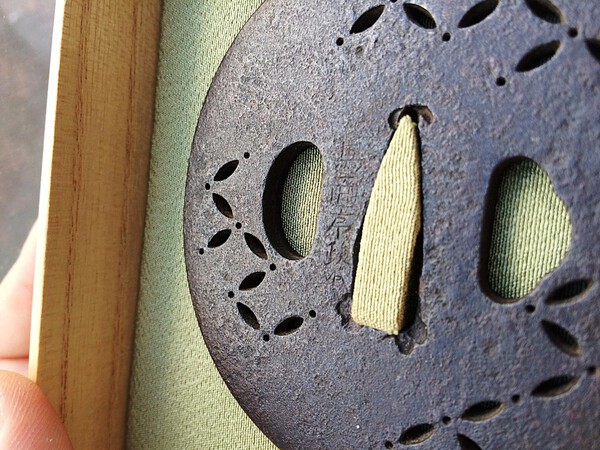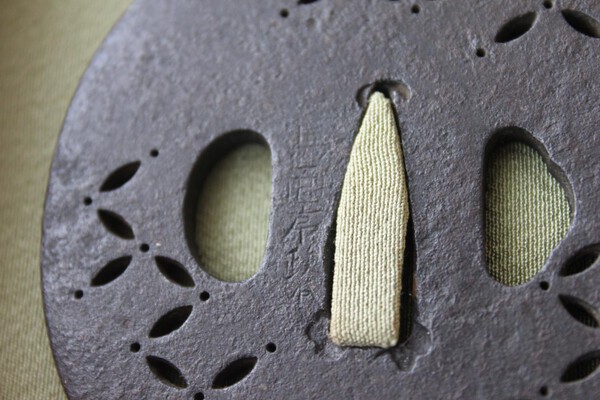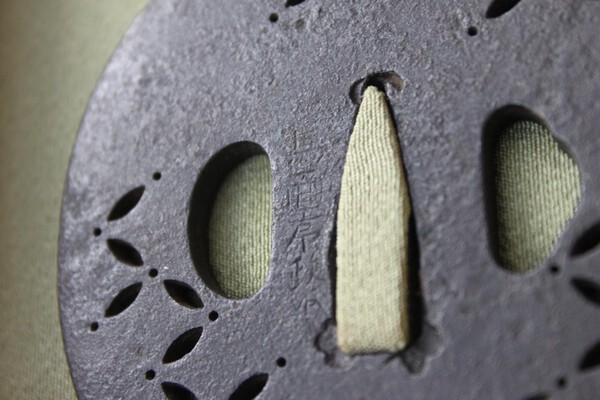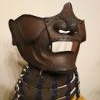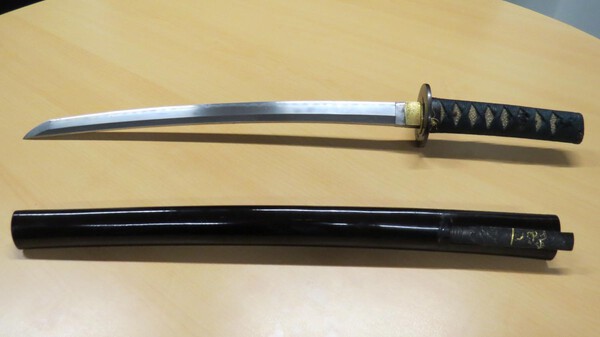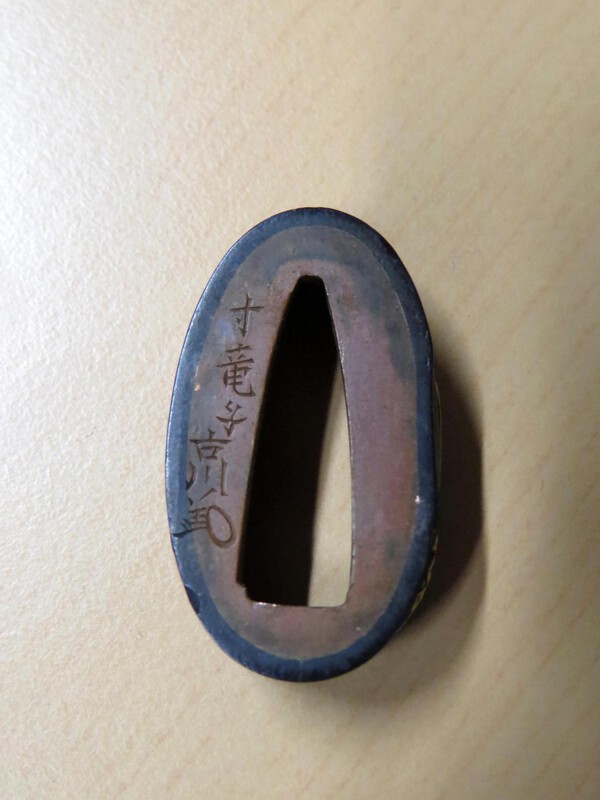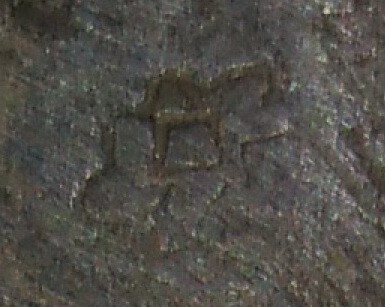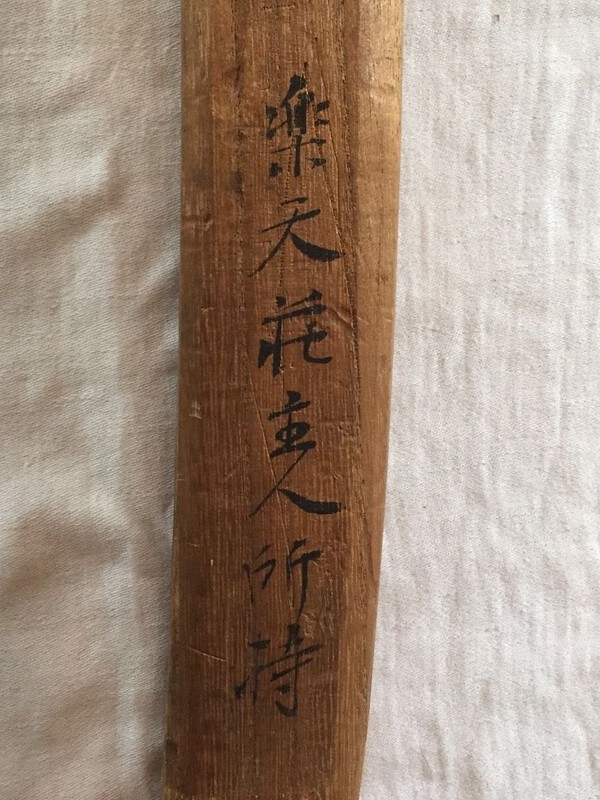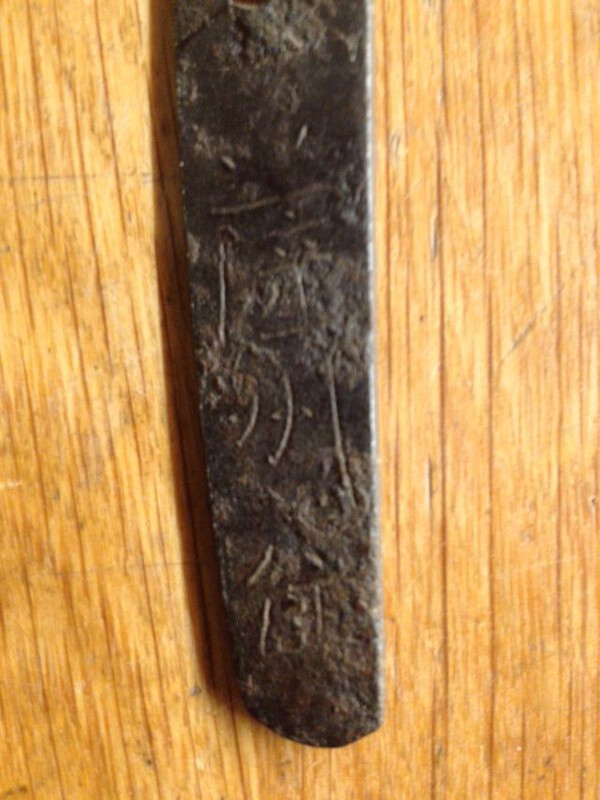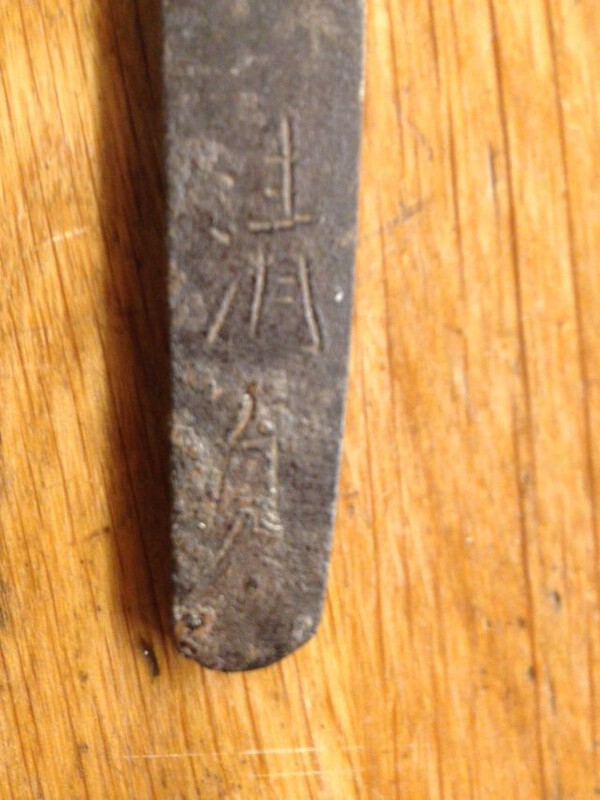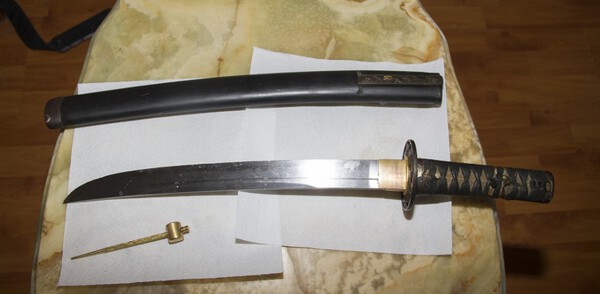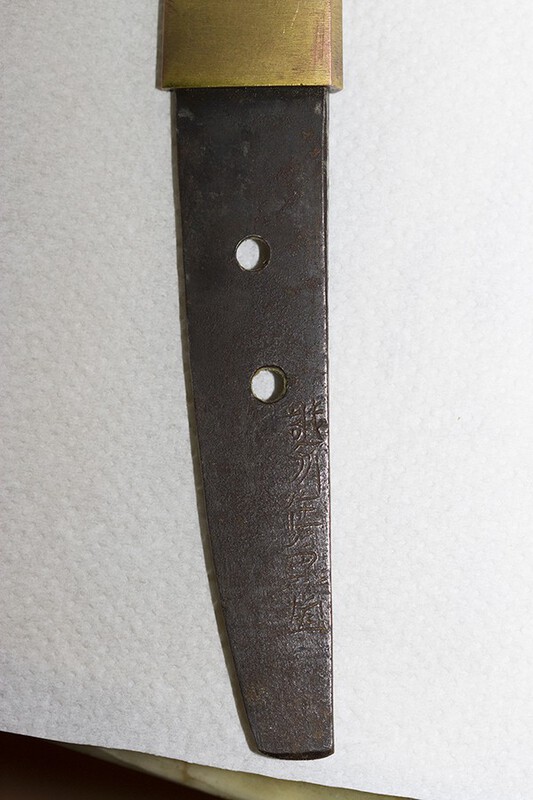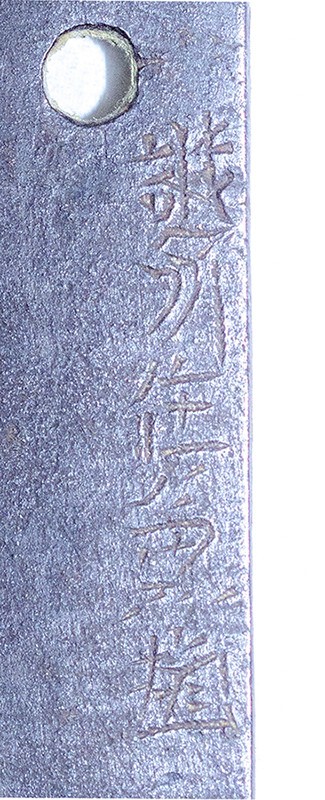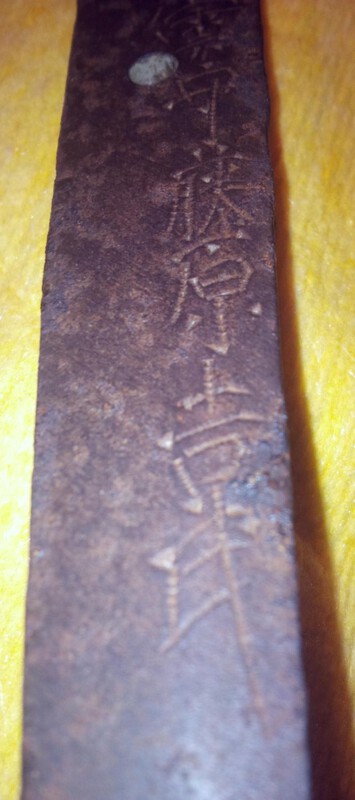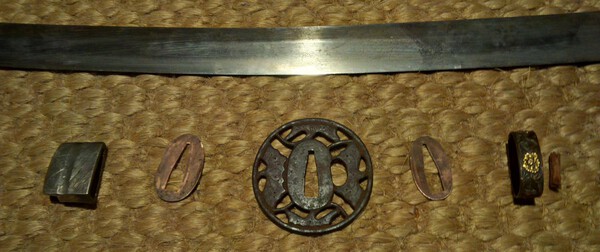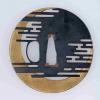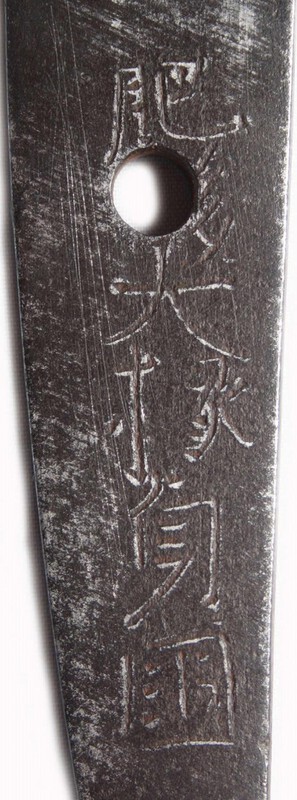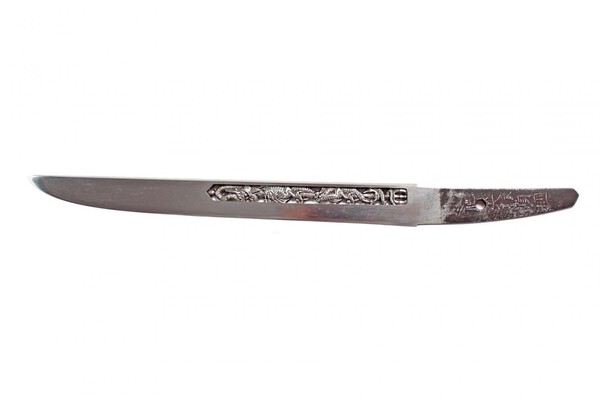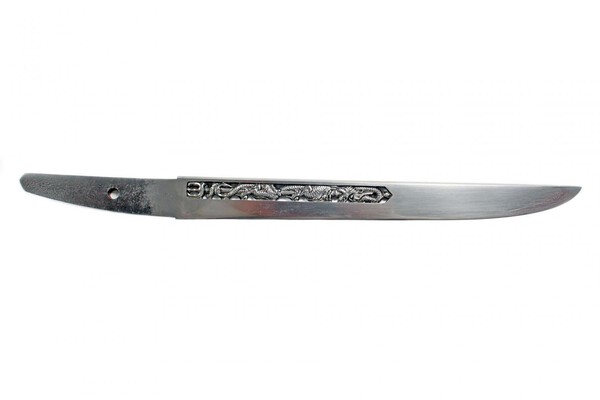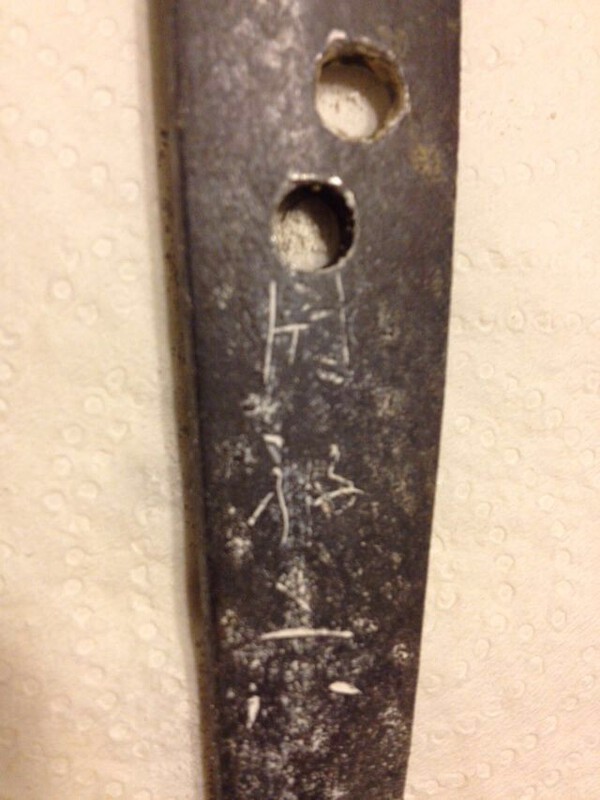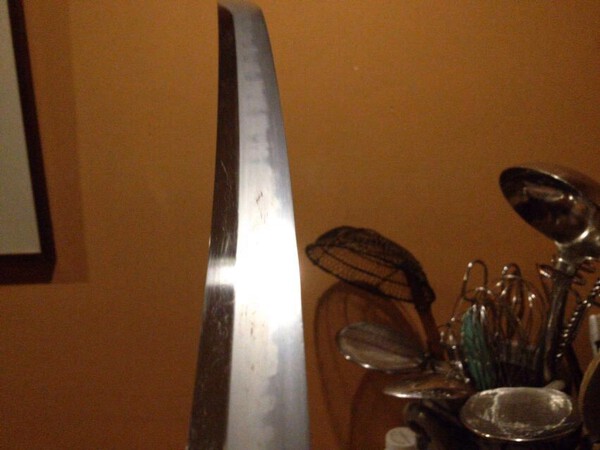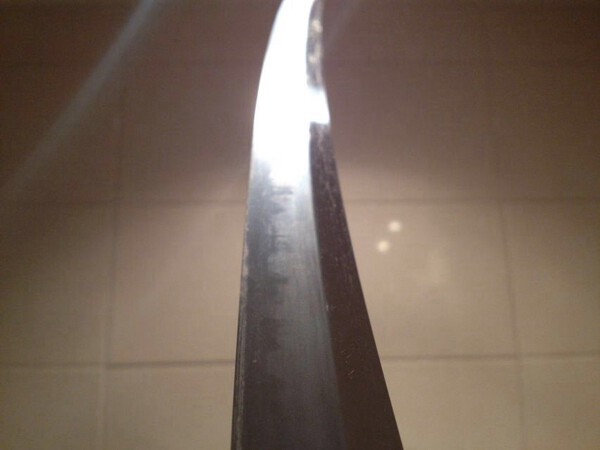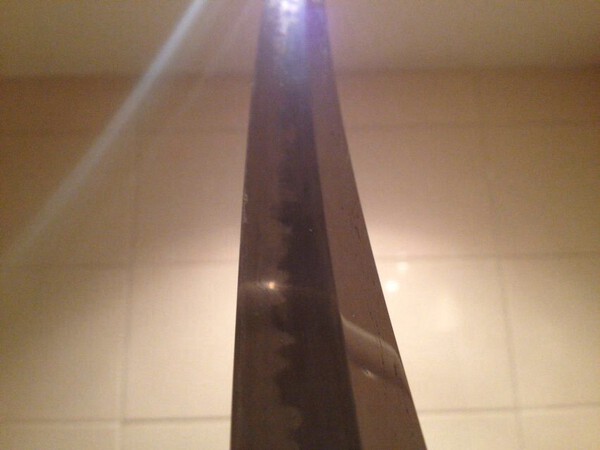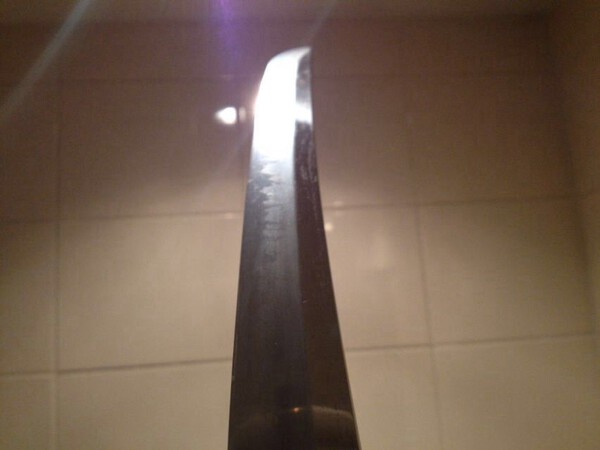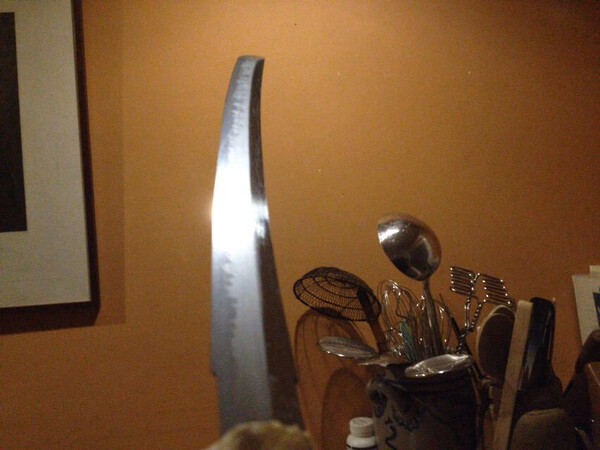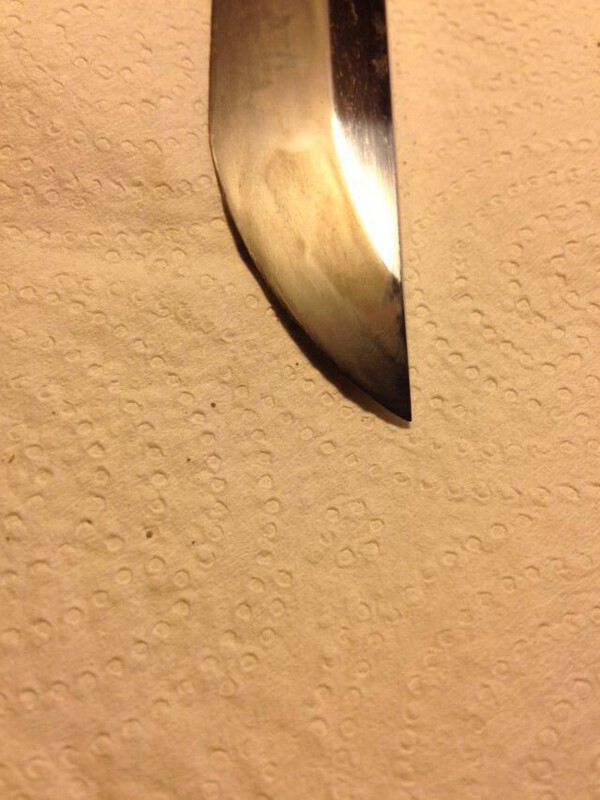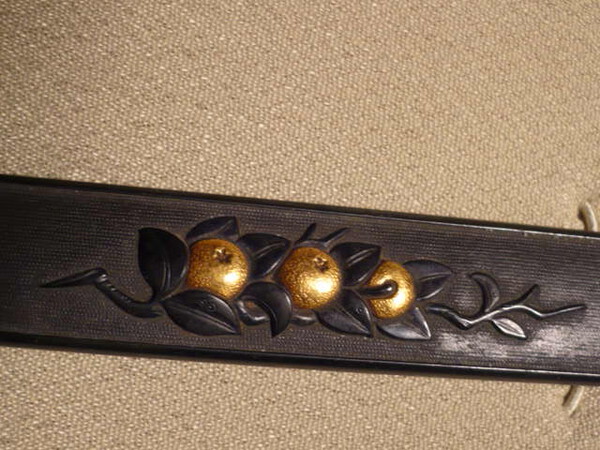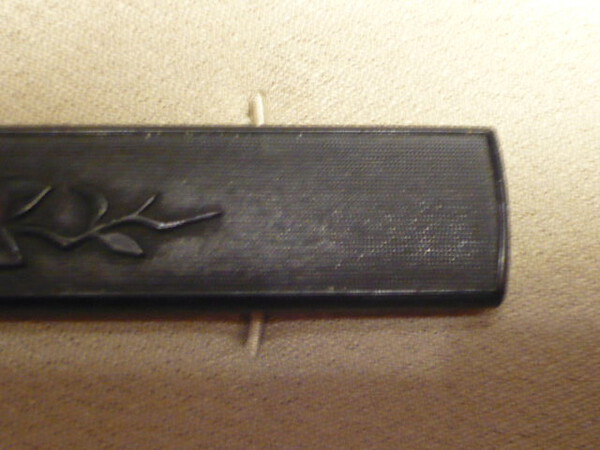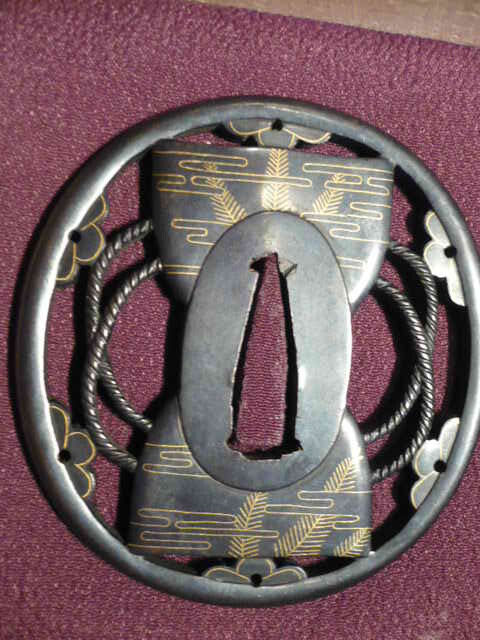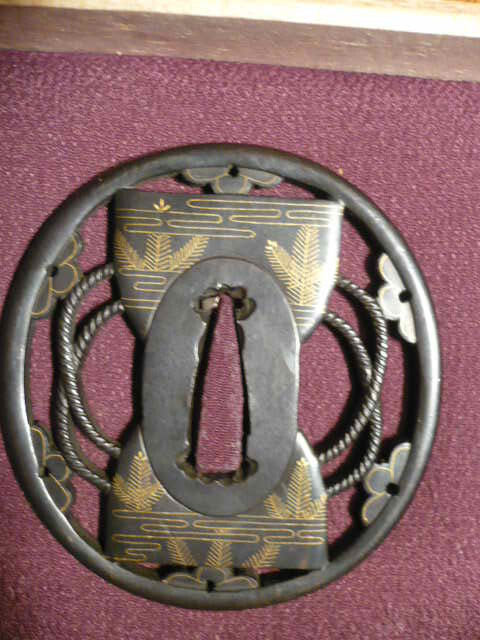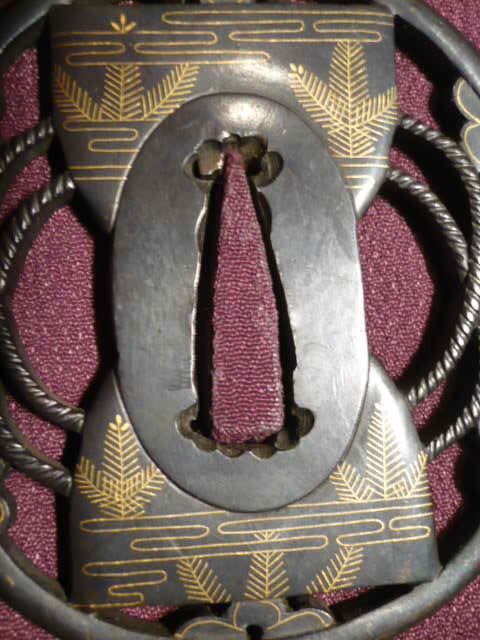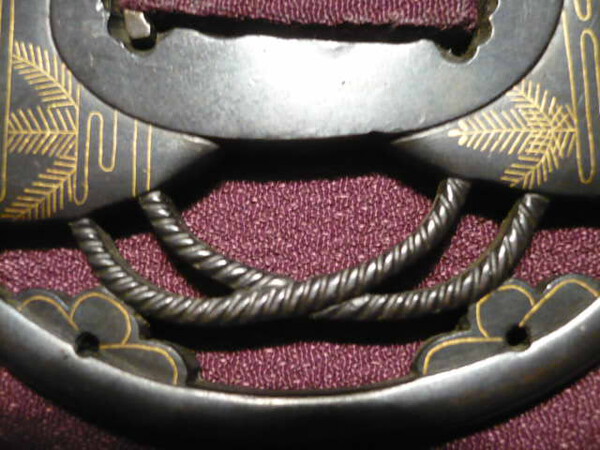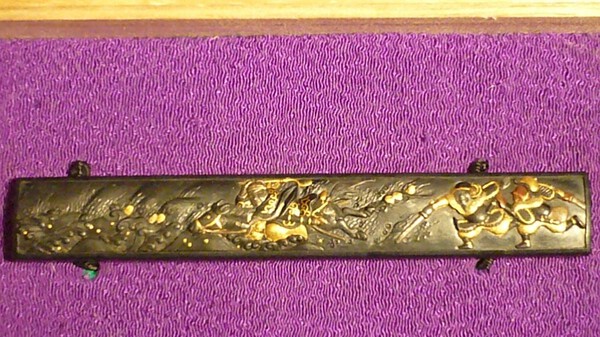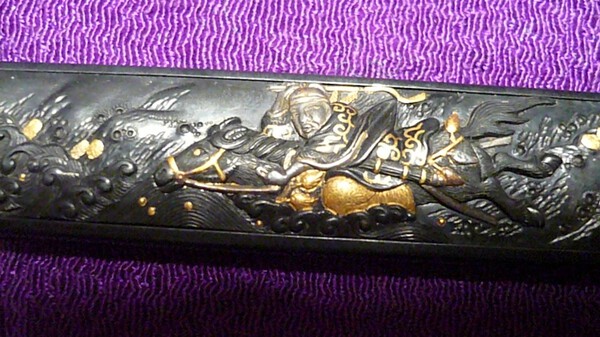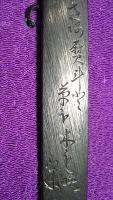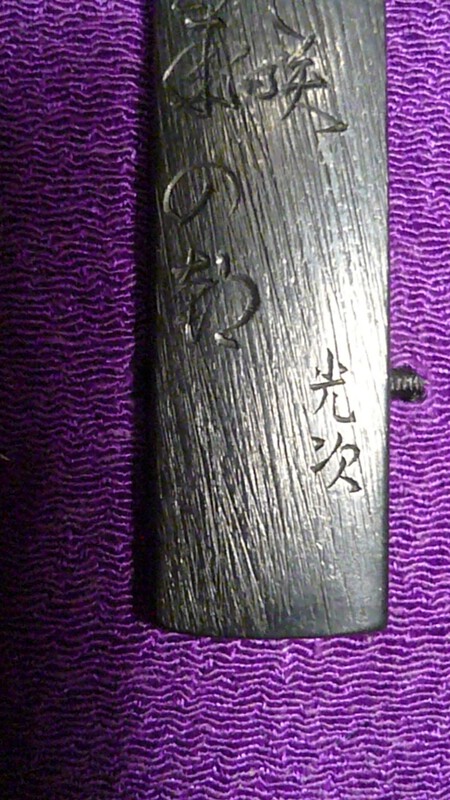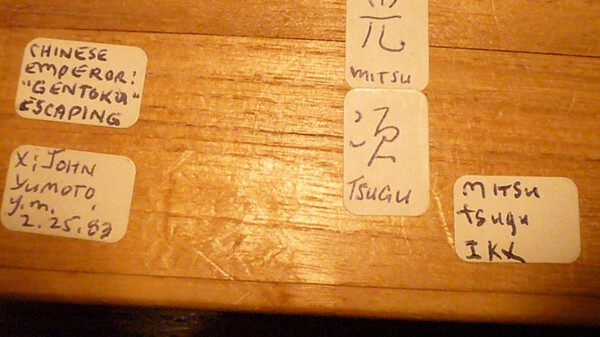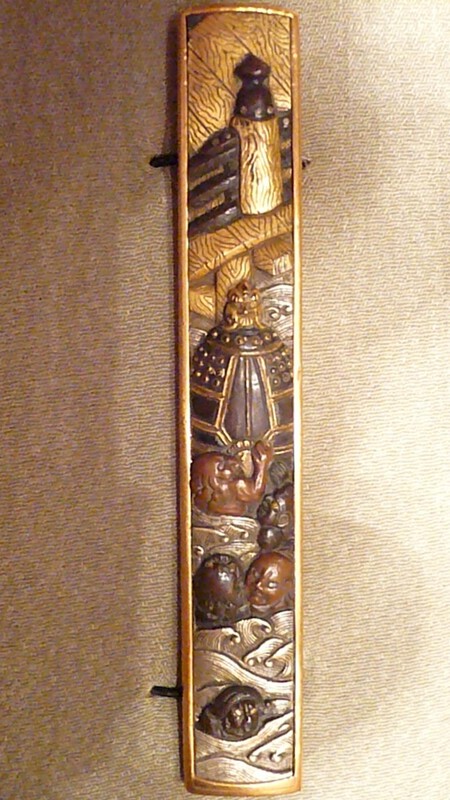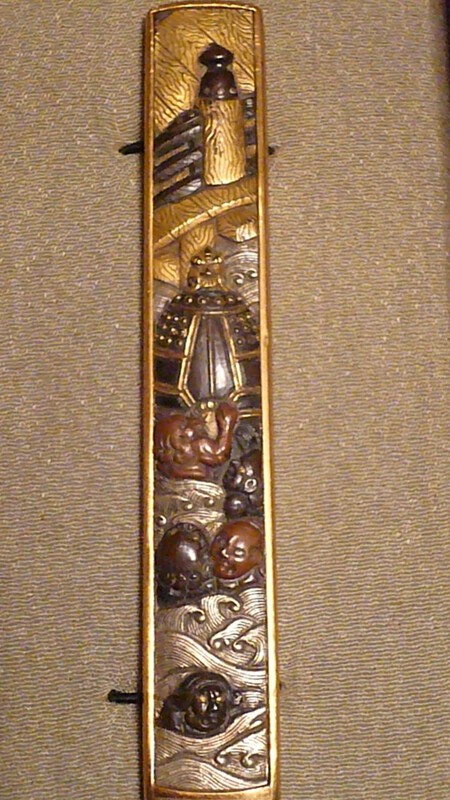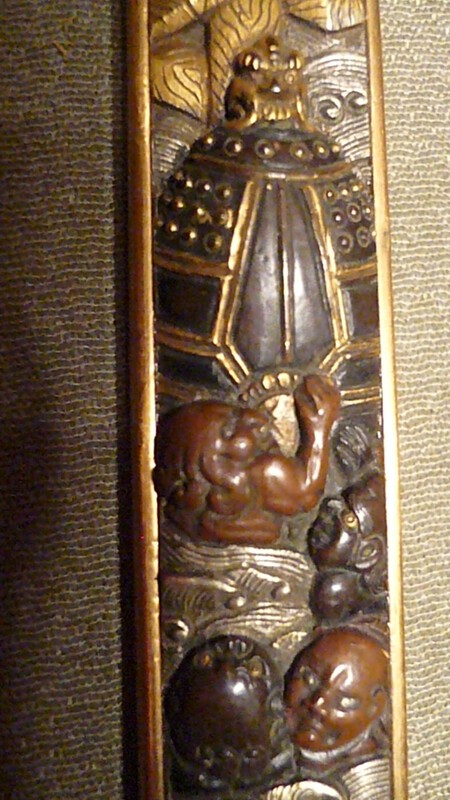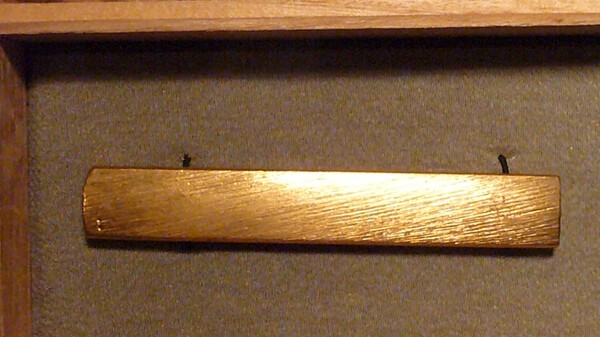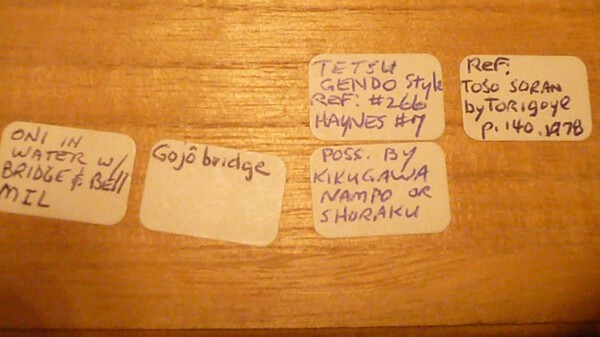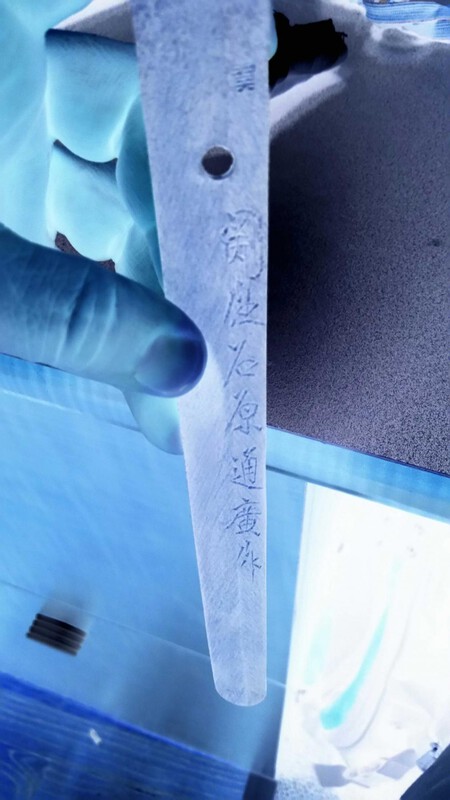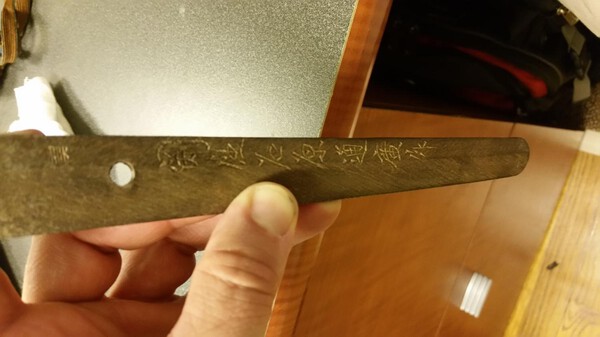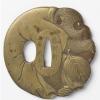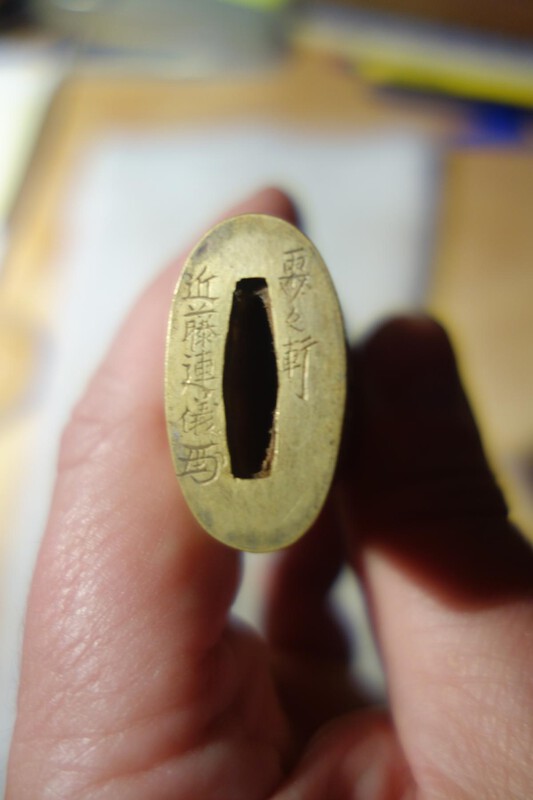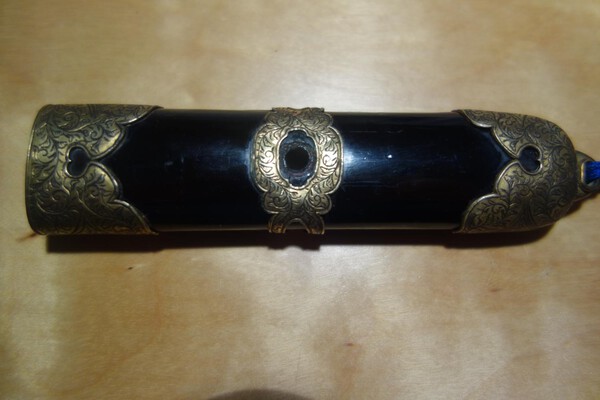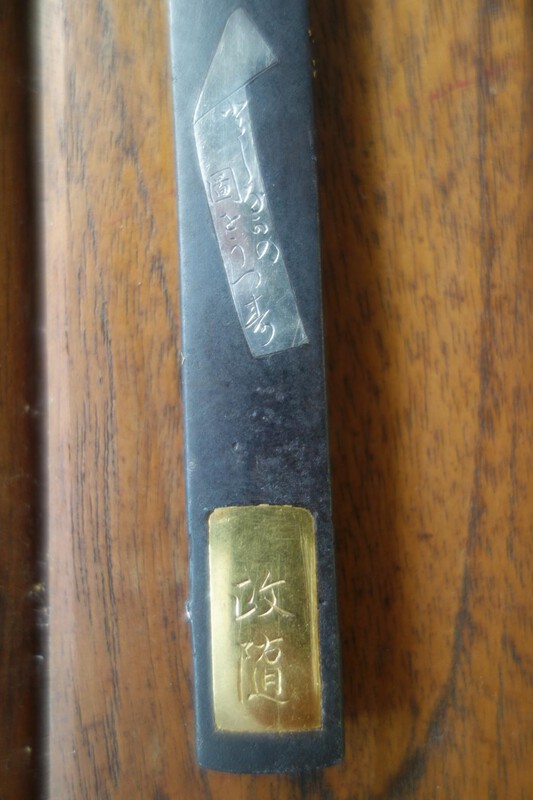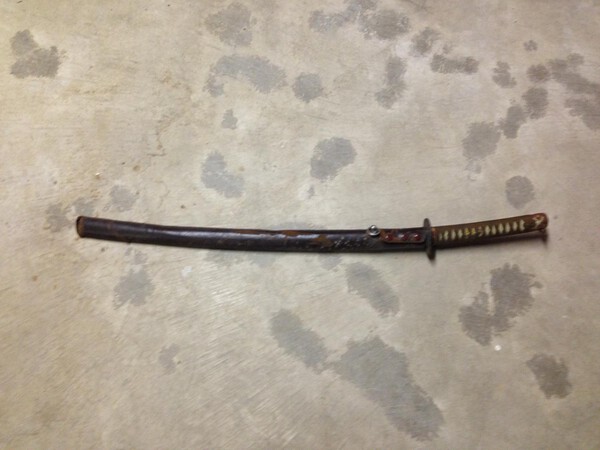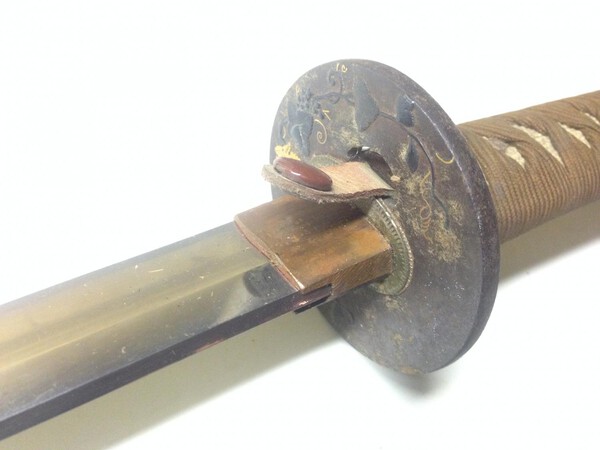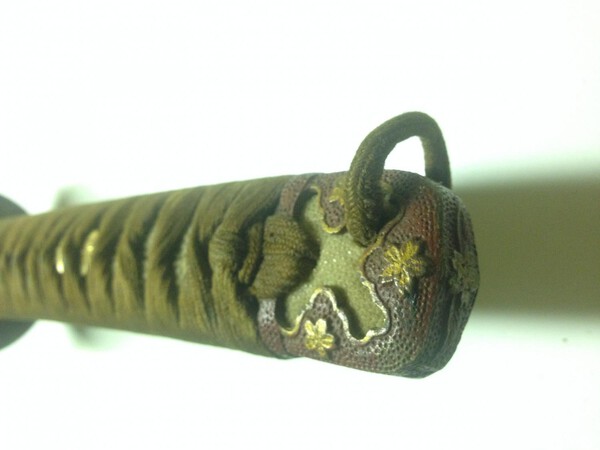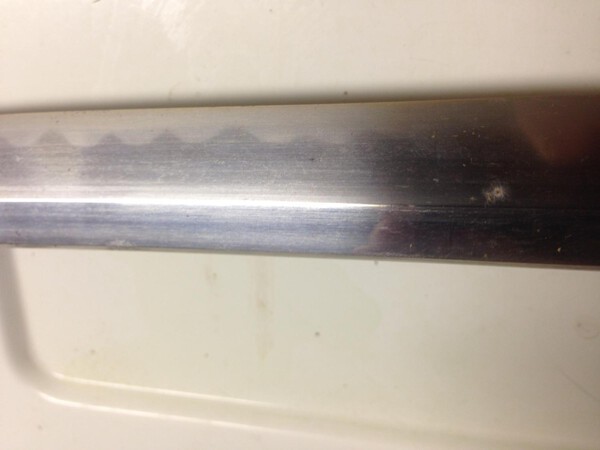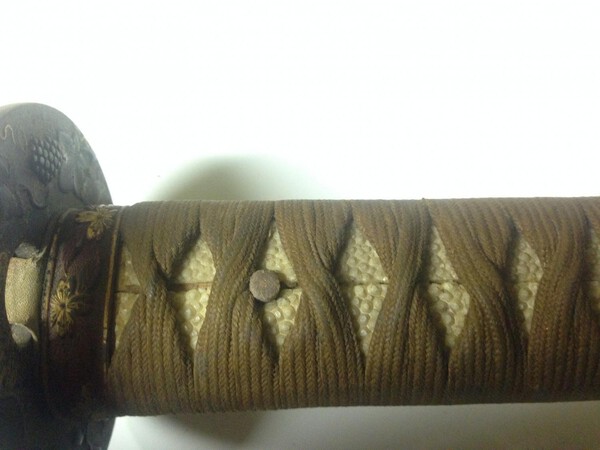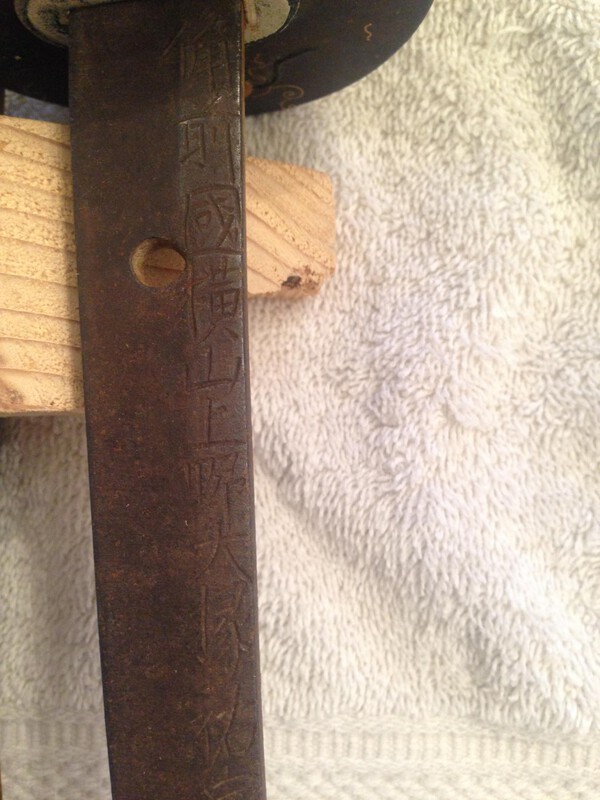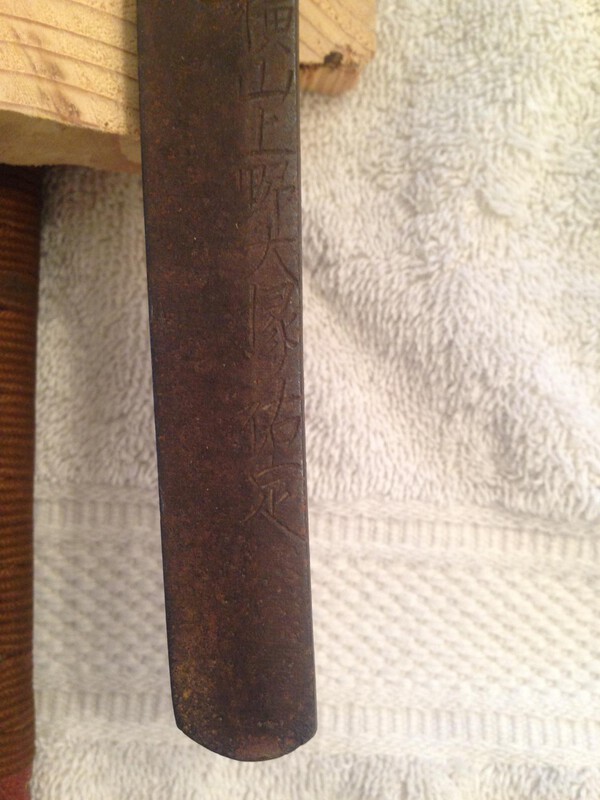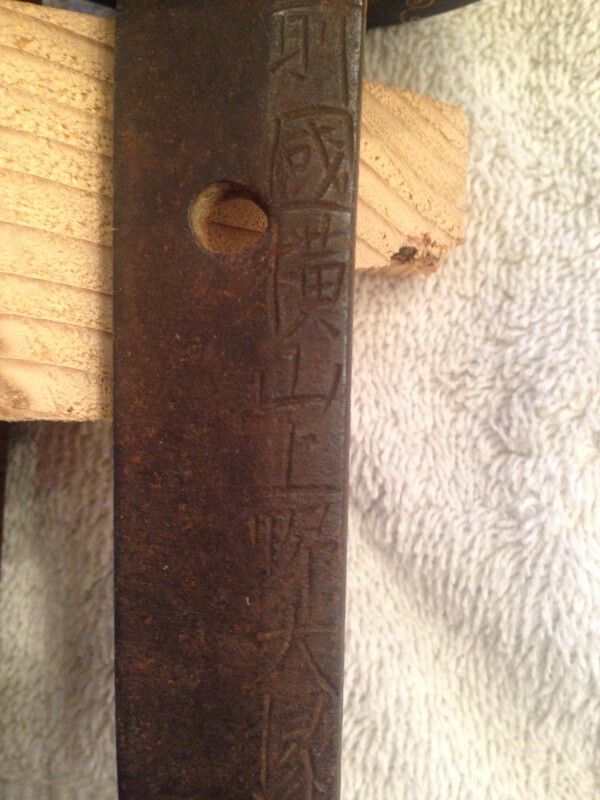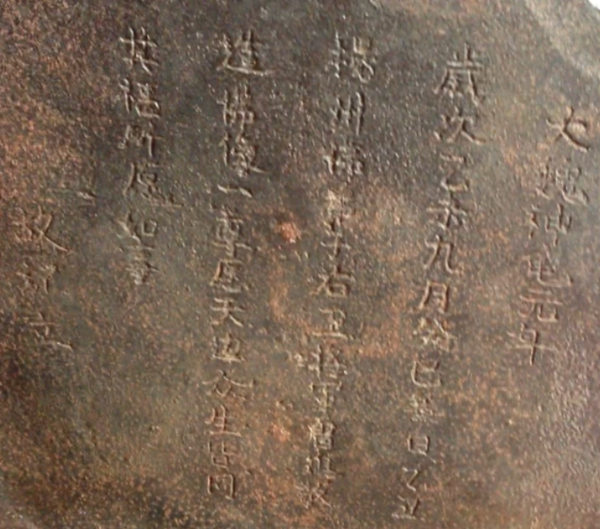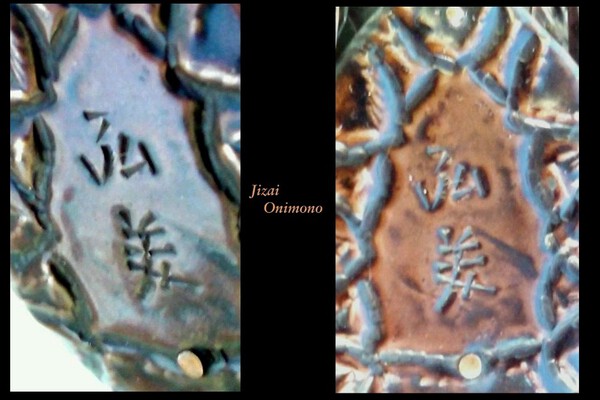Search the Community
Showing results for tags 'translation'.
-
Hi everyone i cannot get even close to reading this.I need help from someone with much more knowledge than me. .thank you so much..sorry i cannot rotate the picture.I will add more tomorrow
-
Hello Everyone, A sword came into my possession today, and as with anything I plan to keep for my own collection, I would like to know as much about the piece as possible. And as always, I have reached the step where I would like to translate the writing that I have found on the piece. In this case, there is a very visible mei on the tang and additional writing on the tsuba. Here is a link to the gallery for the sword, the mei pictures are towards the end: http://imgur.com/a/eDe6E In terms of the known history of the sword, the story is pretty typical: I received this sword from a gentleman who has had it in his personal possession for about 15 years, who had the sword handed down to him from his father, a WWII veteran serving in the Pacific Theater. How exactly the veteran received the sword himself is a mystery, and no associated paperwork or certificates are present with the sword. The main focus of this thread would be to determine the translation for the mei and inscription, but I am also curious about the general nature and history of the piece itself, the extra information would be greatly appreciated! I will tell you what I have observed so far. The tsuka appears to be pre-war based on condition and design, fairly old looking. Most of the metal pieces appear to be made of brass, I would assume the skin on the handle would be stingray, and the wrapping is made of some sort of cloth (not silk). The blade itself is great condition besides the tang. It has definitely never been sharpened, and is in fact quite dull, which is reminiscent of what I have seen in Type 98 blades. Finally, the scabbard is made of wood, and painted with a dark burnt umber-kind of brown paint. The scabbard has a matching brass design and the sageo is also made of cloth. Unfortunately, the bottom of the scabbard splits slightly when the sword is sheathed, you can see the crack that runs down the middle of the foot of the scabbard that it splits along. The mekugi was also damaged, with only one half of it remaining, but other than that I did not find any other significant damage. If you have any other questions, specifications, or need pictures of a specific part I overlooked, let me know. I appreciate any and all input you all can give me! Link To Gallery: http://www.imgur.com/a/eDe6E Thank You!
-
Hi, Could anyone please help me translate this mei ? it is very fainted and it was hard to take a good photo but hoping it is good enough. I was told it migh be Bamen Tsunemasa 馬面 序政 . Could anyone confirm that? And give me some links to read about the maker? And actually wondering if it is even genuine since the mei is barely visible. Thank you, Lukas
-
Hi guys ! I've bought 6 months ago a wakizashi, with a very nice koshirae, though it is not "en suite". I've sent it to NBTHK shinsa but unfortunately the signature of the blade was judged as gimei (sigh) . Anyway, I stil want to submit the koshirae for shinsa, for I think it is genuine and good looking. While waiting for the judgment, I ask your help to translate the signature of the kozuka and the fuchi. The kozuka (and the tsuba) shows the chinese general Kuan Yu on his horse over a bridge. The fuchi (and kashira) shows insects among grass. Sylvain
-
Hi All, Am new to this site and to the collection of such items so please forgive my ignorance regarding terms. I am trying to work out what the markings on the tang mean. It looks to have an ordnance marking at the top and a company logo at the bottom. Please see attached imaged Thanks for all your help.
-
Greetings all, I translated most of the sayagaki but the name of the person who made the attribution is too much for me. Please help!!!!! Thanks,Tom M.
-
Hello, I’m new on this forum, and I would like to apologise in advance for my bad english ! I received one week ago, a ko wakizashi and I would like to ask some help to decrypt the mei : The nakago is 36 cm length and is a hira-zukuri style (don’t know if it could help?) As you can see, I modified the contrast and the chromy of one of my pictures (the blue one) to be easier for you to decrypt the mei. I tried to identify by myself, and I’m not sure about it, but I think it could be « Esshu-ju kanenori » or « Echizen kuni kanenori », but by searching on http://nihontoclub.com/view/smiths/meisearch, I only find two swordsmith who could match with the mei : - Kanenori from the province of Echizen, tensho period (1573 – 1592) used to sign 越州住兼法 - Another Kanenori from the province of Echizen, Shinto period (1596-1781) used to sign 越前國包法 So my questions are : -Did I’m wrong with the translations ? -Does the kanji 兼and 包 are the same and have no difference on this website ? - Could it be possible that the second and the third kanji are 前國 instead of 州住 ? -Could it be a gimei ? Thanks a lot in advance ! (more pictures available)
-
Can someone help with tang translation? Posting for the friend, didn't see the blade in person, only photos...
-
Hello everybody i am from Holland and hoped that somebody could give me some info about a short antique wakizashi? I like to get some info if it is possible about who made the sword? And when is it made? And what kind of crazywild hamon is this? A while ago i bought an old short wakizashi with a nice old and signed tang onthe sword. The total length is 51 cm. The cuttig edge is 38,5 cm The edge thicknes is 0,6 cm. And the edge widenes is 2,7 cm. My friend is polishing swords for some years now and i brought him the blade to show his polishing skills. After a week he phoned me up and told me that it might be a n important blade because he had never seen such a wild and misty kristal hamon in his life. He did not know what kind of hamon this was. So maybe someone can tell me something about this mystery blade? The seller thought it might be made around 1500 and he called it a Magoroku blade or signature. I did not understand it very well that's why i am asking the expert here. Thanks for everyone who wants to help me out!!
- 17 replies
-
- koto
- translation
-
(and 2 more)
Tagged with:
-
I recently acquired these and some other fittings from a private collector who has had these in his private collection for well over 30 years. I was very pleased to acquire them, and some will remain in my personal collection, and some will probably be offered for sale down the road...likely at next year's S.F.Token Kai. I am hoping to get some help and input from the the more knowledgeable fittings collectors of the NMB, so that I can decide which, if any, of these pieces might justify the expense of submission for shinsa (either in Tampa or in Japan). I do not want to have them papered unless they are of better than average quality, or somehow special, or unless papers are going to make a big difference in the piece's potential market value. Because I have purchased a fairly large group of pieces, at some juncture I will no doubt spin off a few of the pieces to offset the cost of other pieces I plan to keep for myself. I have attached some photos of the fittings, in hopes of getting some initial help and information from those far more knowledgeable than myself. Any information is greatly appreciated. The first is a kozuka with what appears to be a gold persimmon (?) motif, in shakudo and with nanako. In looking on line and at my own limited fittings resources, I am thinking Mino Kinko, but I am wondering if this could possibly be a Goto line piece? The next is a shakudo and gold inlay tsuba with water and pine needle (?) motif. Aoi-Art has one listed on their website that is a very similar piece, but with a different inlay design. http://www.aoijapan.com/tsuba-mumei-kaga. Similarmotif pieces I have seen seem to bring higher than average asking prices on various websites. Aoi-art lists this piece as Kaga Kinko school. Is this part of a Goto school line? This piece was never mounted, as best I can tell. It is a bit larger than the one on Aoi-art. I am wondering if this might be a good shinsa candidate? The next is a really nice shakudo kozuka with Chinese Emperor Gentoku being chased through water and escaping some other riders. There is writing on the back of the kozuka that I would really like to have translated, if anyone is inclined and can do so. The signature is listed as "Mitsutsugu." The piece was purchased personally from John Yumoto in 1983. Can anyone tell me what school "Mitsutsugu" was from, and how he ranks as a fittings artist? The workmanship on this piece is really above average, in my opinion. The last is a really incredible kozuka depicting Oni stealing a bell and crossing a river. The relief on the piece is very high and detailed. I have not tested it, nor would I, but I cannot tell if the backing is solid gold or gold washed. I have attached a photo of the fitting's box lid with the information the previous owner had obtained. I have no idea what school of fittings artists this piece would be from. Any ideas? If one were to shinsa any of these pieces, any opinions as to which, if any, would most benefit from or justify the expense of a shinsa (NTHK or NBTHK)? Any assistance or information is greatly appreciated. Regards, Bill E. Sheehan (Yoshimichi)
-
translation Please Help Decipher Mei (Navy Kyu-Gunto)
djmorgz posted a topic in Translation Assistance
Can anyone help me decipher the Mei found upon a Japanese Naval Officer's Kyu-gunto? It has different characters on each side along the tang found under the sharkskin grip. The blade is extremely sharp! I'm no good with Asian lettering, however the sword is pretty incredible and I'd love to know if it is dated, maker signed, & where it was made. Has an incredibly intricate sword tassel & ball knot that is orange/red & olive green. The hilt backstrap even has a natural Ruby & Blue Sapphire. One pin holds blade in place. Blade registers 99.99% steel on XRT Spectrometer and definitely was hand forged. Thanks in advance! Mike -
Could one of you please help in the translation of the below Mei. Seki Blade, but looking for the smith and anything else you may be able to add. Thank you in advance....
-
Hi, I do not know how to decipher this signature on a Kashira. The Tsuka is for a ken Thank you for your help Bruno
- 2 replies
-
- koshirae
- translation
-
(and 1 more)
Tagged with:
-
Hello, Can someone translate the poem which is back the Kozuka? It is signed Masayuki. Is it Gimei ? Topic is Jurojin with his scroll, crane and tortoise. Thank your for your help. Bruno
-
Hello Nihonto Members, [Pardon Any Ignorance I May Show... I Am Completely New To Japanese Swords] I recently was lucky enough to acquire what I thought was a basic Japanese Gunto from WW2 (Maybe a Type 98 I thought). The swords scabbard has seen better days and is in rough shape. The swords Tsuka shows signs of use and appears to be typical WW2. The Tsuba looks much older than the sword and is obviously not a typical commissioned guard. The actual blade seems to be in good condition (few spots but no serious issues, chips or dents) as well as it's been sitting in a box in a basement since it was brought back from WW2. After a couple days of having the sword I became more curious as to it's origins since the tsuba looked 100 years older than the rest of the sword. I thought maybe this was an older family blade and tsuba that was re-purposed for the Japanese military. I researched how to ID the sword and came to the conclusion I would have to remove the handle which was nerve wrecking but was really easy to do. My wife laughs at me but I always wear think rubber gloves when holding the sword. Anyways, I took some snapshots of the mei and researched the kanji online. After a bit of research I got lucky and found a similar sword which bare similar kanji which led to me finding more and more and more... examples. Basically I have, I think, a pretty typical but not rare Yokoyamo Sukesada. From what I have researched (and I know basically nothing on these topics) this region, Sukesada, produced a large quantity of swords many years ago. However, all of the similar swords I have seen online have a kanji for a clan (all being "Fujiwara"). My sword has a straight line of kanji with no clan marking. I think it reads "bi zen kuni yoko yama ko zuke dai jo suke sada". I took photos of the one side of tang. I was 95% sure I did not see any markings on the opposite side of the tang so I took no pictures (now I am questioning if there were markings on that side since I am not 100% sure). I also checked the tsuba for any markings but did not see any. Any information anyone might have as to the age or any other details of the blade and tsuba would be much appreciated. I took these photos with an iPhone (Sorry for the quality) but will snap more photos with my dslr if anyone would like more photos. Thanks for Your Time, Chris U.
- 14 replies
-
- translation
- wakizashi
-
(and 1 more)
Tagged with:
-
Dear members, although this is not a nihonto I stumbled upon an interesting iron Buddha statue with Kanji on the back (see picture). As my knowledge of Kanji is rather restricted to a few Kanji, I would be glad for any help on this translation. Cheers, Robert T.
-
I have recently acquired an old Wakizashi Blade confiscated at the end of WWII. The featured piece was one of 5 Salvaged from a pile of swords and other weapons at the Japanese surrender to the Pacific Fleet. As it happened the sailors were each given their pick of 5 and this was one of the five chosen by one such sailor. I have always had a passion for Japanese Fuedal history and the cultural that was developed around the Samurai Sword. Now I own a piece of such history and would like to learn more about where this piece fits in. I have attempted to translate the signature but with little success. the most I could determine was that it was from Yamato Province. I do not wish to sell it. I simply wish to increase my knowledge of it. It was reputed to belong to a Japanese officer but it seems to pre-date the war so I wonder if it is a family blade that was passed down. Can anyone help me to learn who might have made it and how old it is. It will help me decide whether to restore it for myself as a show piece or whether to have it proffessionally restored. https://imageshack.com/i/eyh75Mmwj https://imageshack.com/i/f0fSltdqj https://imageshack.com/i/f0ltUKJ4j https://imageshack.com/i/exX0cvcYj https://imageshack.com/i/pdj3I4tdj I can take other pics if necessary to clarify a particular image. It should be noted that I have done nothing to it. The first 2 pics were an attempt to enhance the images using contrast and various filters. The orange coloration seems to be wax or possibly crayon in another's attempt to decipher the writing of the signature. Any help in this matter would be greatly appreciated.
- 13 replies
-
- wakizashi
- translation
-
(and 1 more)
Tagged with:
-
Hello forum... I am trying to learn about Jizai Onimono and their makers. This is the Breast Plate of the "Crayfish" art piece I bought. May I please ask, can you help me with the name translation and who he was or family history? I have been searching the internet, but, there is only a few sites, and, most are about Onimono Auctions/for sale sites. Is there any sites that are dedicated to Jizai Onimono art work and enthusiast? I did not know where else to ask. Thanks for viewing.. Alton Takata - aka Ken Katana on the weekends

